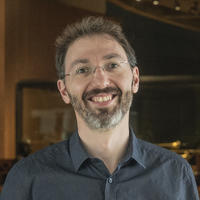Materiality-driven digital approaches to music museum artefacts: from spectro-imaging and CT scans, to photogrammetry
Digital Humanities and Sensory Heritage (DHSH) - Seminar Series
Thursday 1 December 2022, 4.30pm
Speaker: Jean-Philippe Échard (Paris)
All Welcome
In the last three decades, the digitalisation of techniques for the analysis of cultural heritage artefacts has profoundly modified the ways of working with and interpreting data. Through a series of examples of projects conducted on the collection of historical musical instruments at the Musée de la Musique (Cité de la Musique - Philharmonie de Paris, Paris France), this talk will explore this major change, and highlight the value of these new approaches today. The characterisation of pigments in paintings decorating 17th-c. Flemish harpsichords sheds light on the painting techniques used and on the smalt trade. X-ray spectro-imaging proves to be key for identifying royal coats of arms, in painted emblems on 16th-century violins made by Andrea Amati, and to identify parchments from a single 14th-c. book of hours that were found in three instruments by Antonio Stradivari. CT-scans and photogrammetry techniques produce 3D digital models of musical instruments, used to better understand their material history or their vibrational behaviour, or to 3D-print instruments. The potentials of such techniques to improve the readability of these material historical sources can be hugely valuable stimulating for historians.

Jean-Philippe Échard is Curator of Stringed Instruments at the Musée de la Musique in Paris (Cité de la musique – Philharmonie de Paris, France) since 2014. He trained as a chemist, with a degree from the École Nationale Supérieure de Chimie, Paris (1998) and a doctorate from the Muséum National d’Histoire Naturelle (2010) on 16th-18th-c. varnishing techniques in instrument-making. He conducted research as conservation scientist on musical instruments in the laboratory of the Musée de la Musique (1999-2004 ; 2006-2013) and on easel paintings at the National Gallery of Art, Washington DC, USA (2004-2005). He is the author of two books Le violon Sarasate, stradivarius des virtuoses (2018), and Stradivarius et la lutherie de Crémone (2022) as well as numerous papers and articles.
Find out more about the Digital Humanities and Sensory Heritage Network here.